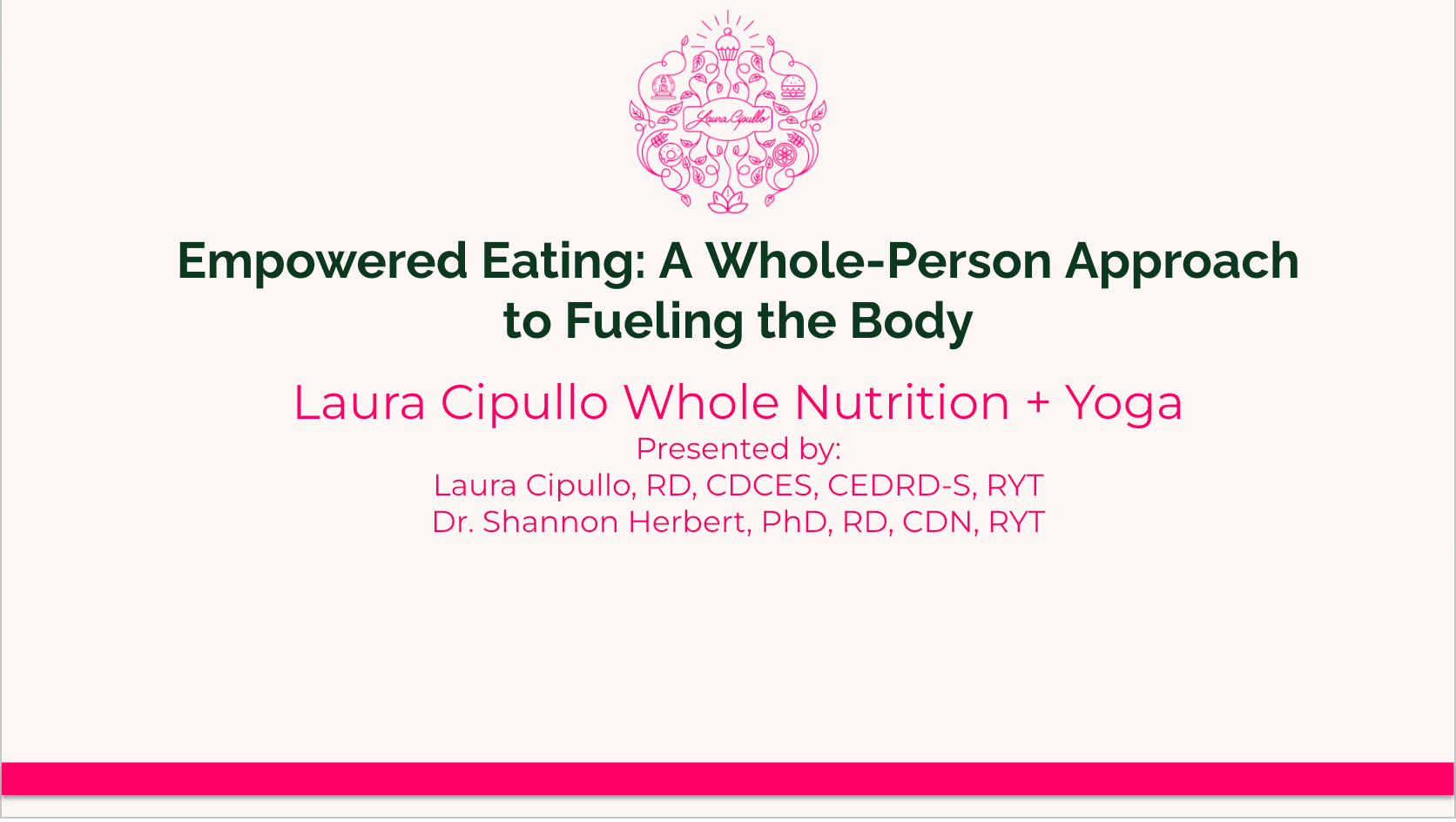While it may not feel like fall in the air, the leaves are turning, the pumpkin-infused flavors have hijacked the Trader Joe’s shelves and the pumpkin spice lattes are pumping. Believe it or not, it is the start to the “holiday season”. For some, this time is filled with family, joy, and cheer, while for others its filled with too many questions, anxiety and fear. If you fall into the latter category, this note is for you. Here is our go-to holiday dinner table guide of quick tips that take under 5 minutes to set you up for success- whether it is a Friday night family or friends gathering, “friendsgiving”, thanksgiving, etc. these steps will support you in showing up as your most regulated self when you sit down at the dinner table.
Practice Self Enquiry Prior To The Event
Self-enquiry is a radically open dialectal behavior therapy (RO-DBT)1 tool used to help us identify unwanted emotions or thoughts to alert us to areas in our lives where we may need to change or grow. The question to ask is – “Is there something to learn here?”.
Self-enquiry seeks self-growth by turning toward the very things one wants to avoid—and ‘outing’ or ‘revealing’ what is discovered in order to locate one’s blind spots. The goal is to find where the known meets the unknown, asking questions rather than searching for the quick fix or answer to resolve.
How to do self-enquiry 101:
- Take out a pen and paper, or the notes of your phone or a blank doc
- Set a 3-5 min timer
- Start with asking yourself what is bringing you tension, describe what is happening or has happened (thoughts, feelings, sensations), take yourself into specific time and experience of unwanted emotion
- Choose to move towards something uncomfortable
- what were the sights, sounds and smells and context?
- Move away from regulation, regulation and answers prevent growth
- Look to find your “edge” the feeling of embarrassment or perhaps shame, where the known meets the unknown, a part of yourself that you’d rather not see, a place of messiness
- Work to find good questions not answers
- Get curious – what is lesson here? Is this an old story? Are you perhaps getting stuck in old pattern?
- Answer what am I not understanding, through continuous questions to bring you closer to the personal unknown where you do not want to go
- Stop when the timer goes off with the questions you have asked yourself, there is no “right way” allow that feeling to exist, come and go like a wave
To learn more about self-enquiry listen to this week’s sound bites –
https://open.spotify.com/episode/6h7J30ydrjq0eHop6Iimvr?si=noFa_ls8R6KPYGWOZmoluQ
Episode 18-
https://open.spotify.com/episode/4Ho90MwYQwHN7bXrLGJ92G?si=72wKI1b5QcyQx7K2zB2PtQ
https://www.opalfoodandbody.com/self-inquiry/
Somatic Regulation Pressure Points
Moments before entering the room, ground yourself into your body, strengthening the mind body connection by using somatic experience regulation. These practices aim to connect physical body sensations with emotional states in order to aid in regulation of one’s nervous system.
Try these 4 acupressure point areas, applying gently pressure moving in slow intentional motions around the areas using fingers or thumbs.2–4
- Inner wrist- PC6 for anxiety and calming the mind
- Earlobe- for promotion of relaxation and focus
- Between the eyebrows- sometimes known as the third eye, targeting stress relief and clarity
- Base of the skull- most often use for relief of tension headaches
Activate Social Safety by Changing Physiology (RO-DBT)
Adapted from RO-DBT Skills Manual 1
Our nervous systems are regulated by both internal and external cues, always scanning the environment for biofeedback. This means our brains are programmed to detect and react to different stimuli – safety cues, novel cues, rewarding cues, threatening cues, and overwhelming cues, thus always picking up and responding to one of these five cues. Due to the fact that when one system is activated, the others are more-so “quiet”, we can turn our social safety system on and our threat- emotion system off by doing certain behaviors that our brain naturally links to safety. Think – master control panel of your nervous system.
As eloquently described in RO-DBT by Thomas R. Lynch, “when the social safety system is activated, we feel open, flexible, and relaxed; we are more likely to want to explore, play, and socialize—it’s our friendly state. When our social safety system is on, our defensive system is off or muted. We can’t be relaxed and angry, afraid and content, or excited and calm at the same time. The good news is that when stressed or anxious, we can turn our social safety system on and our threat- emotion system off by doing certain behaviors that our brain naturally links to safety. Thus, we don’t have to think our way out of anxiety; we can do our way out. So, if you want to feel less tension, let your body do the work!”.
- Practice These Skills
- Use the Big Three + 1. Lean back in your chair, take a slow deep breath, make a closed-mouth smile, and use an eyebrow wag.
- Use big expansive gestures with open hands rather than keeping your arms and hands close to your body.
- Move your facial muscles. When threatened or tense, our facial muscles naturally become frozen and we lose our ability to flexibly communicate via facial expressions. By deliberately moving our facial muscles, we send safety signals to our brain. Facial movement tells our brain, “I must be safe because I am not trying to mask my inner feelings.” In front of a mirror at home or elsewhere, when alone, practice tensing, releasing, and stretching your facial muscles. Exaggerate your facial expressions. Make your eyebrows go up and down; then scrunch your eyes together; pucker your mouth; then stretch your lips as wide as they can go, open your mouth and eyes as wide as they can go, stick out your tongue as far as it can go; then raise your eyebrows and stretch all of these muscles as much as you can at the same time. Now close your eyes as hard as you can and scrunch up all of the muscles in your face, and tense them all as hard as you can—then release the tension. Tense and release as many different facial muscles as you can—see if you can find all of them! Repeat whenever possible throughout your day.
- Deliberately breathe more deeply and slowly; use long, slow exhalations. Purposely exhale longer than normal. Slow your rate of breathing to six breaths per minute; on inbreath, focus on raising the belly, not the chest.
- Deliberately tense and relax large muscle groups. Start with your toes and feet, then to legs and torso, then to your arms and neck, and then to your facial muscles. Tense each set of muscles, hold the tension, then slowly release the tension and notice the difference.
© Thomas R. Lynch. Permission is granted to the reader to reproduce this form for personal use. 19
The Skills Training Manual for RO DBT Radical Openness Handout 3.1
- Use touch, deep pressure, massage, and hugs. Practice touching or hugging soft objects (furry pets, stuffed toys, pillows); lightly stroke your face and neck; massage the muscles of your face, scalp, and neck. Locate the spot directly beneath the beginning of each eyebrow in the uppermost corner of each eye socket; use both thumbs to press this spot in an upward direction, and notice what happens. Wrap yourself tightly in blankets or towels (swaddling). Place a small heavy beanbag or sandbag over your forehead and thighs—notice what happens. Hug yourself by crossing both arms over your upper chest until your hands can reach your upper back, then rock your body slowly back and forth. Rub your tummy in a clockwise direction. Wrap a hot water bottle in a towel, lie on the floor, and place a cushion under each knee, then place the hot water bottle over your belly—notice what happens. Gently but firmly press the space in between the webbing of your thumb and pointer finger—notice what happens. Purchase a commercially available massaging machine or vibrating/mas- saging chair. Take a warm bath or shower; use the jet sprays in hot tubs to massage your back and neck. If you have a partner or friend to practice with, ask for a neck or foot massage; ask for a hug and squeeze firmly— practice hugging each day, if possible. Lie down on the floor and allow your friend to gently support your head in his or her hands; then, with your fingers, gently rub the point directly above the bridge of your nose adjacent to each eyebrow. Experiment with using the sensation of touch—be creative—and incorporate touch into each day.
- Chewing and eating food. When anxious, our bodies are tense and ready for action. Our brain associates eating and chewing with resting and digesting, not fleeing or fighting. Chewing moves the muscles of the face linked to social safety. It is difficult to swallow when really upset; chewing and swallowing food naturally calms the body. Look for your favorite calming foods (for example, milk and cookies) and incorporate these into everyday living. Carry sugar-free chewing gum, sweets, or snack bars with you. When stressed, rather than restricting intake, start chewing and moving those facial muscles.
- Hearing—music and the human voice. When stressed, use music that you find calming or soothing and/or recordings of the human voice that you find calming to activate your social safety system. Avoid listening to music that is arousing, disturbing, or exciting.
- Vision—gazing at pictures of loved ones, pets, or landscapes. You can trigger your social safety system by gazing at pictures linked to warmth, expansion, or a sense of peace. These might be pictures of a friend, your child or grandchild, a favorite pet, or your partner in a place that brings back warm memories. Use pictures you can carry with you and look at when you feel threatened or tense. As you gaze, breathe deeply and notice what happens.
20
The Skills Training Manual for RO DBT Radical Openness Handout 3.2
Give these tools a try and let us know your experience. It is helpful to document your thoughts and feelings before using each tool as well as after to gain insight as well as share with your providers. We wish you a happy, healthy and peaceful start to your holiday season. Let’s practice sitting in and moving through the discomfort, strengthening our self-care muscles. Stick around for our holiday themed blogs coming up with all things recipes, skills, hacks and more! Visit us on Instagram @eatkaleandcupcakes
References
- Lynch – RO-DBT Skills Training Manual (2018) | PDF | Dialectical Behavior Therapy | Mindfulness. Accessed November 7, 2024. https://www.scribd.com/document/545112648/Lynch-RO-DBT-Skills-Training-Manual-2018
- 10 Somatic Interventions Explained — Integrative Psychotherapy Mental Health Blog. Integrative Psychotherapy & Trauma Treatment. October 22, 2019. Accessed November 7, 2024. https://integrativepsych.co/new-blog/somatic-therapy-explained-methods
- Acupuncture and The Vagus Nerve — Morningside Acupuncture NYC. Accessed November 7, 2024. https://www.morningsideacupuncturenyc.com/blog/acupuncture-and-the-vagus-nerve
- 10 Pressure Points for Anxiety. Accessed November 7, 2024. https://psychcentral.com/anxiety/pressure-points-for-anxiety#pressure-points









